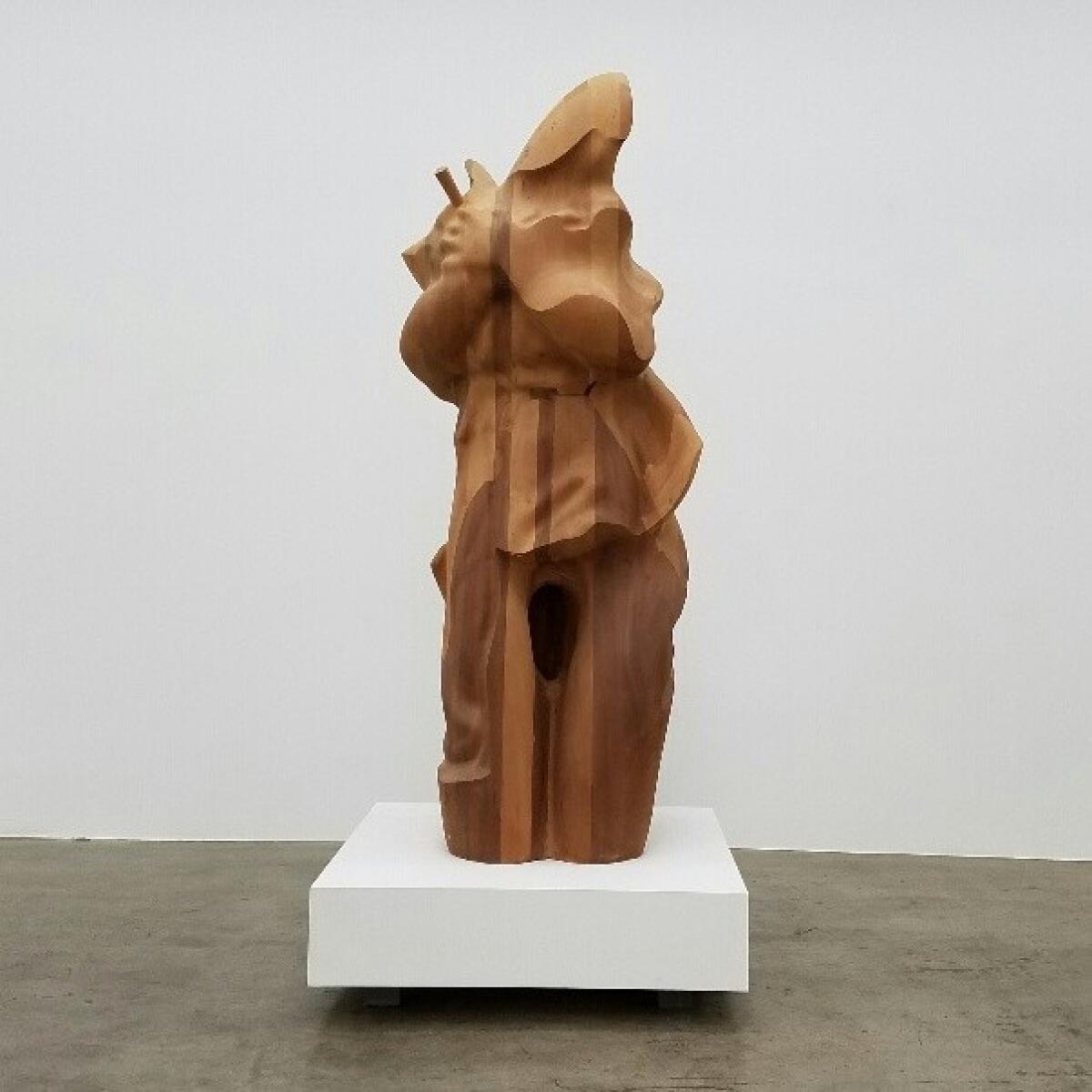Review: Douglas Tausik Ryder’s curious wood sculptures at Jason Vass Gallery
- Share via
Woodworking goes digital in large-scale sculptures by Douglas Tausik Ryder. The human hand meets the alphanumeric ether, while the insistent evidence of tools and machinery acts as interlocutor.
Constantin Brancusi is an obvious inspiration for many abstracted forms in five complicated wood sculptures from the last five years at Jason Vass Gallery. (Three bronzes and a large drawing are also on view.) Here and there, nods are also made to artists as diverse as Umberto Boccioni, Isamu Noguchi and Claes Oldenburg.
But Tausik Ryder absorbs them into something peculiar and eccentric. Several are formed around an egg-shaped void, as if born of an impossible vacuum. Elsewhere, soft geometries meet bodies battered, bound or distended.
Take “Myth of Miracles,” a blocky monolith with figurative undertones that’s nearly 7 feet tall. Seemingly feminine, the form stands atop sturdy “thighs” and wraps a right “arm” around back and a left one across the “body” to grasp a “shoulder.” No human anatomical structure is actually there, except in a suggestive, even illusory way. But the concealed figure seems helpless yet self-protective.

Move around to the back and, in a nice surprise, internal geometric openings in the wood do not conform to organic external shapes. At the bottom, a strange, child-like little chair is tucked inside smoothly carved folds of wood. Carefully honed and seamlessly pieced together wooden blocks have been charted through computer programs, pressing logical organization against psychological stress.
“Myth of Justice” is a small, tabletop bronze enveloped in crinkly fabric. It too is non-figurative, although the bulbous forms suggest a body in bondage — not justice blindfolded as much as shrouded, like Rene Magritte’s lovers frustrated in an attempted embrace.
The large wood sculptures are models that Tausik Ryder also plans to cast in bronze. On the admittedly spare evidence of a single, completed large bronze in the gallery’s entry court, it might not be the best choice.
Visually, seamless bronze does not compensate for the loss of his complex wooden construction method. Especially now, when industrial manufacture has become a norm for sculpture, bronze seems overly cautious. By contrast, flaunting elegant evidence of labor intensive fabrication by hand adds a forceful layer of demanding concentration.
Jason Vass Gallery, 1452 E. 6th St., Los Angeles. Through Feb. 26; closed Sundays and Mondays. (213) 228-3334, www.jasonvass.com
christopher.knight@latimes.com
ALSO
Hammer Museum finally cues up a big expansion. Here's an early look
Theaster Gates on W.E.B. DuBois and Donald Trump
Will Salvation Mountain find its savior? The quest to save a folk-art landmark
The biggest entertainment stories
Get our big stories about Hollywood, film, television, music, arts, culture and more right in your inbox as soon as they publish.
You may occasionally receive promotional content from the Los Angeles Times.








